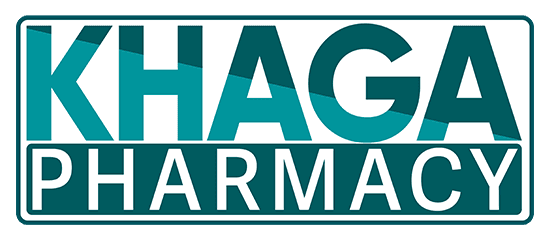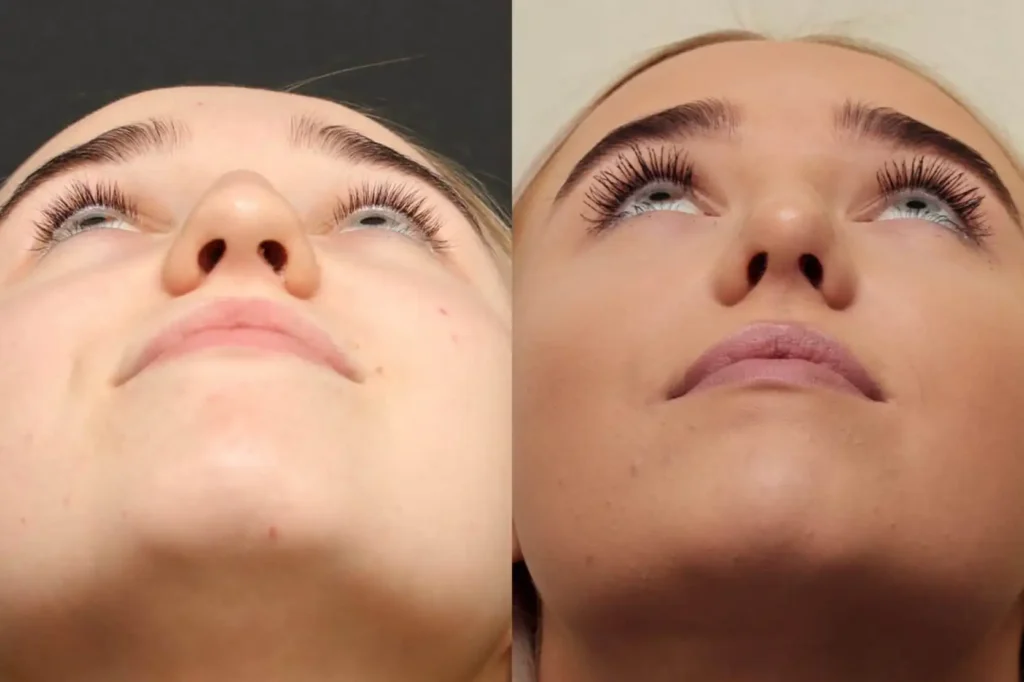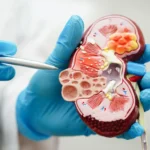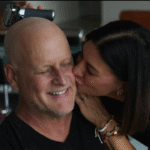Learn Rhinoplasty before and after results can transform both appearance and breathing functionality. This comprehensive guide covers everything you need to know, including pre-surgery preparation, the rhinoplasty procedure, and the recovery process. Learn about the key differences between open and closed rhinoplasty, recovery timelines, and tips for achieving the best results.
Introduction to Rhinoplasty Before and After:
Rhinoplasty before and after results can significantly enhance your appearance, boost confidence, and improve breathing functionality. A nose job, medically known as rhinoplasty, is one of the most sought-after cosmetic procedures worldwide. Whether you’re considering rhinoplasty for cosmetic reasons or medical needs, understanding what to expect before and after the surgery is crucial for making an informed decision. This blog will take you through everything you need to know about rhinoplasty, including preparation, healing, results, and FAQs.
Rhinoplasty not only refines the shape and size of the nose but also helps correct functional issues such as breathing problems caused by a deviated septum. The journey of rhinoplasty begins with understanding the procedure, realistic expectations, and recovery timelines. If you’re contemplating this surgery, it’s important to visualize the before-and-after changes to see how transformative the results can be. Let’s explore the rhinoplasty process, from initial consultation to recovery and beyond.
Open rhinoplasty leaves a small scar on the columella, which typically fades over time.
What to Expect Before Rhinoplasty:
Before undergoing rhinoplasty, preparation is key. It all starts with scheduling a consultation with a board-certified plastic surgeon who has extensive experience in rhinoplasty. During this meeting, you will discuss your goals, medical history, and potential outcomes. Surgeons typically use advanced imaging technology to give you a visual preview of how your nose might look after the procedure.
- Medical Evaluation: The surgeon will conduct a thorough examination of your nose, including skin quality, bone structure, and internal nasal passages.
- Pre-Surgery Instructions: You’ll be advised to avoid smoking, alcohol, and certain medications like aspirin or ibuprofen, as these can interfere with healing.
- Setting Realistic Expectations: A skilled surgeon will help you understand what’s achievable based on your nasal anatomy and desired results. Remember, the goal is natural-looking results that complement your face.
Being well-informed before surgery can ease anxiety and ensure a smoother rhinoplasty experience.

Rhinoplasty Procedure Explained:
Rhinoplasty is a delicate surgery that reshapes the nose by modifying cartilage, bone, and skin to achieve the desired appearance and function. The procedure can be performed using two main techniques.
- Open Rhinoplasty: Involves an incision across the columella (the tissue separating the nostrils) to allow better visibility and precision. This method is preferred for complex cases requiring extensive adjustments.
- Closed Rhinoplasty: Involves incisions made inside the nostrils, leaving no visible scars. It’s ideal for minor adjustments and offers quicker recovery.
The surgery is performed under general anesthesia and typically takes 1-3 hours. After reshaping the nose, the surgeon will place internal and external splints to support the new structure during initial healing.
What to Expect Immediately After Rhinoplasty:
Post-surgery, you can expect swelling, bruising, and mild discomfort around the nose and under-eye areas. These are completely normal and will gradually subside.
- Recovery Timeline: The first week involves resting and keeping your head elevated to minimize swelling. You will have a splint on your nose, which is usually removed after 7-10 days.
- Pain Management: Any discomfort is managed with prescribed pain medications.
- Follow-Up Appointments: Your surgeon will schedule follow-ups to monitor your healing progress and remove any sutures or splints.
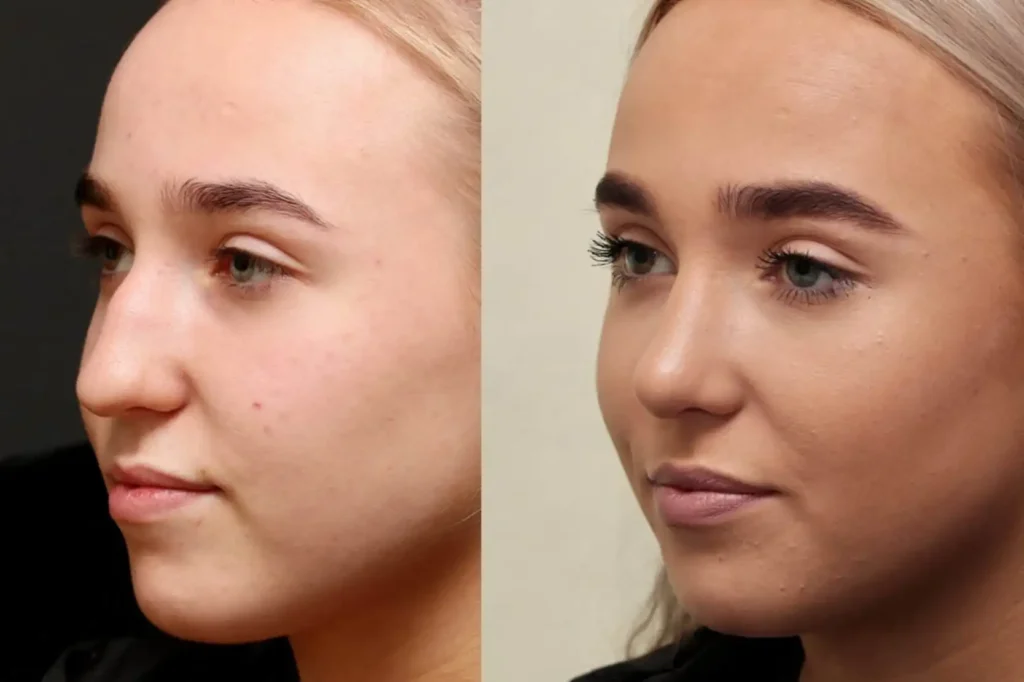
Rhinoplasty Before and After Results:
The results of rhinoplasty are truly transformative. Before the surgery, you might be dealing with issues such as a hump on the nasal bridge, a crooked nose, or a bulbous tip. After the surgery, patients often experience a more refined, symmetrical, and balanced nose that enhances their overall facial harmony.
Before Surgery: Common concerns include a nose that feels out of proportion, asymmetrical nostrils, or breathing problems. After Surgery: Results include:
- Improved nasal symmetry and definition.
- A more balanced nose shape that complements facial features.
- Enhanced breathing if functional corrections were made.
Top-Rated 3 Rhinoplasty Clinics in the USA:
Here are some of the most recommended clinics for rhinoplasty across the United States.
1. The Beverly Hills Center for Plastic & Laser Surgery (California): Dr. Ashkan Ghavami leads this clinic, renowned for delivering natural, harmonious results tailored to each patient’s unique facial structure.[https://www.beverlyhillscenter.com]
2. Manhattan Facial Plastic Surgery (New York): Dr. Philip Miller, a double-board-certified surgeon, specializes in cosmetic and functional rhinoplasty using innovative techniques.[https://www.drphilipmiller.com/case-studies]
3. The Seattle Rhinoplasty Center (Washington): Dr. William Portuese is known for achieving balance and symmetry in his rhinoplasty procedures, making his clinic a top choice on the West Coast.[https://www.seattle-rhinoplasty.com]
Key Tips for Rhinoplasty Recovery:
- Rest and Patience: Recovery is gradual, and patience is crucial. Follow your surgeon’s post-op instructions meticulously.
- Healthy Habits: Stay hydrated, eat a balanced diet, and avoid smoking to promote healing.
- Protect Your Nose: Avoid any trauma to your nose and stay out of direct sunlight to minimize swelling and scars.
FAQ
Most frequent questions and answers
Most swelling subsides within 2-3 weeks, but final results can take up to 12 months.
In closed rhinoplasty, there are no visible scars. Open rhinoplasty leaves a small scar on the columella, which typically fades over time.
Yes, functional rhinoplasty can correct issues like a deviated septum to improve airflow and breathing.
Conclusion:
Rhinoplasty before and after results can have a profound impact on both appearance and quality of life. Whether your goals are cosmetic, functional, or both, understanding the entire process from preparation to recovery—is essential for achieving the best outcome. By choosing an experienced, board-certified surgeon and following post-operative care instructions, you can enjoy a smoother recovery and beautiful, long-lasting results. If you’re ready to take the next step, schedule a consultation with a trusted surgeon to explore your options.
